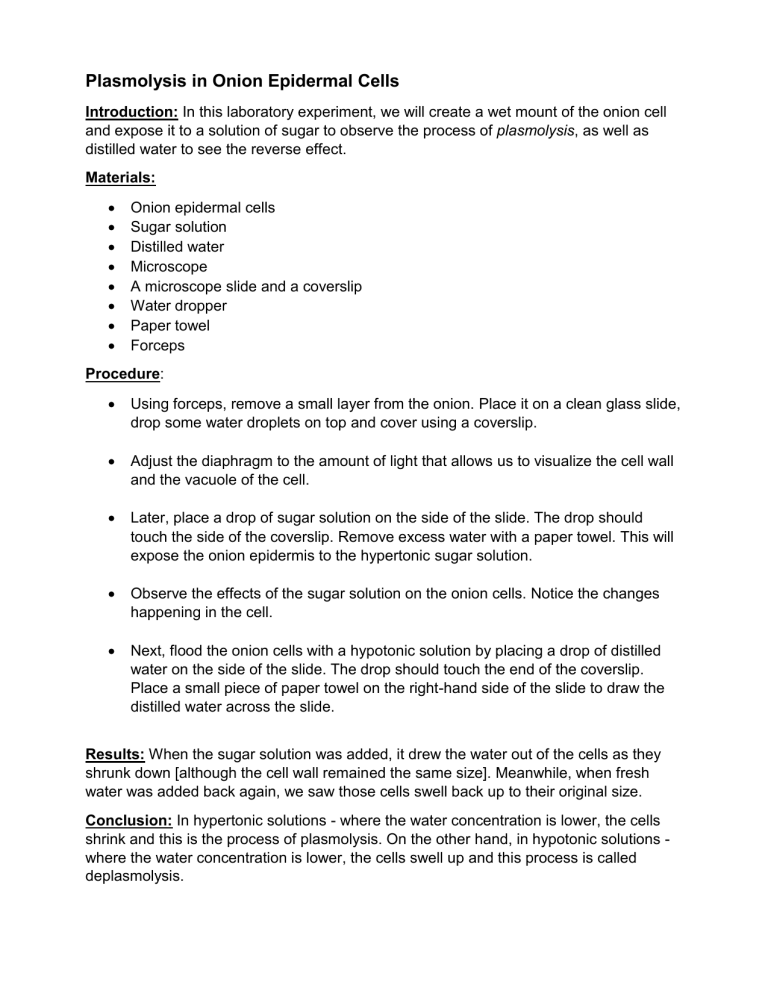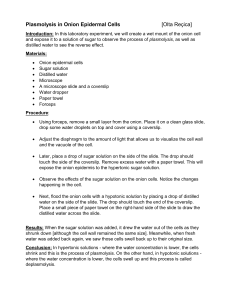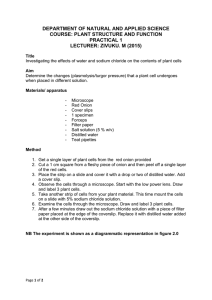
Plasmolysis in Onion Epidermal Cells Introduction: In this laboratory experiment, we will create a wet mount of the onion cell and expose it to a solution of sugar to observe the process of plasmolysis, as well as distilled water to see the reverse effect. Materials: Onion epidermal cells Sugar solution Distilled water Microscope A microscope slide and a coverslip Water dropper Paper towel Forceps Procedure: Using forceps, remove a small layer from the onion. Place it on a clean glass slide, drop some water droplets on top and cover using a coverslip. Adjust the diaphragm to the amount of light that allows us to visualize the cell wall and the vacuole of the cell. Later, place a drop of sugar solution on the side of the slide. The drop should touch the side of the coverslip. Remove excess water with a paper towel. This will expose the onion epidermis to the hypertonic sugar solution. Observe the effects of the sugar solution on the onion cells. Notice the changes happening in the cell. Next, flood the onion cells with a hypotonic solution by placing a drop of distilled water on the side of the slide. The drop should touch the end of the coverslip. Place a small piece of paper towel on the right-hand side of the slide to draw the distilled water across the slide. Results: When the sugar solution was added, it drew the water out of the cells as they shrunk down [although the cell wall remained the same size]. Meanwhile, when fresh water was added back again, we saw those cells swell back up to their original size. Conclusion: In hypertonic solutions - where the water concentration is lower, the cells shrink and this is the process of plasmolysis. On the other hand, in hypotonic solutions where the water concentration is lower, the cells swell up and this process is called deplasmolysis.








